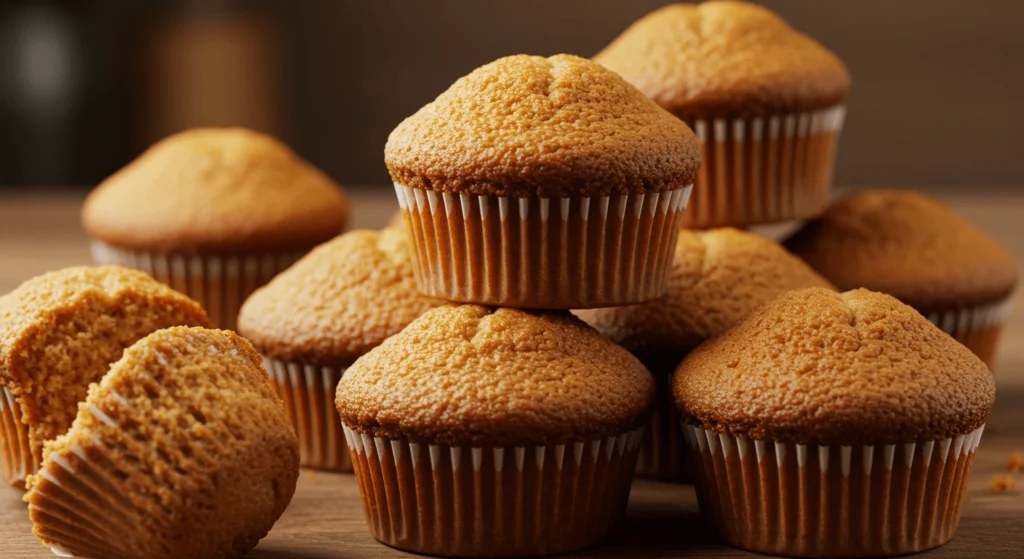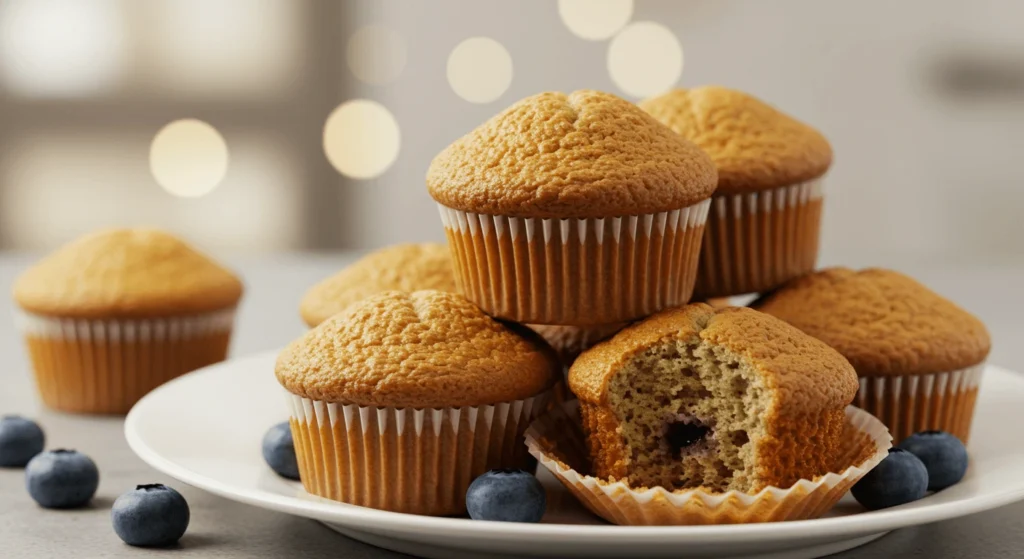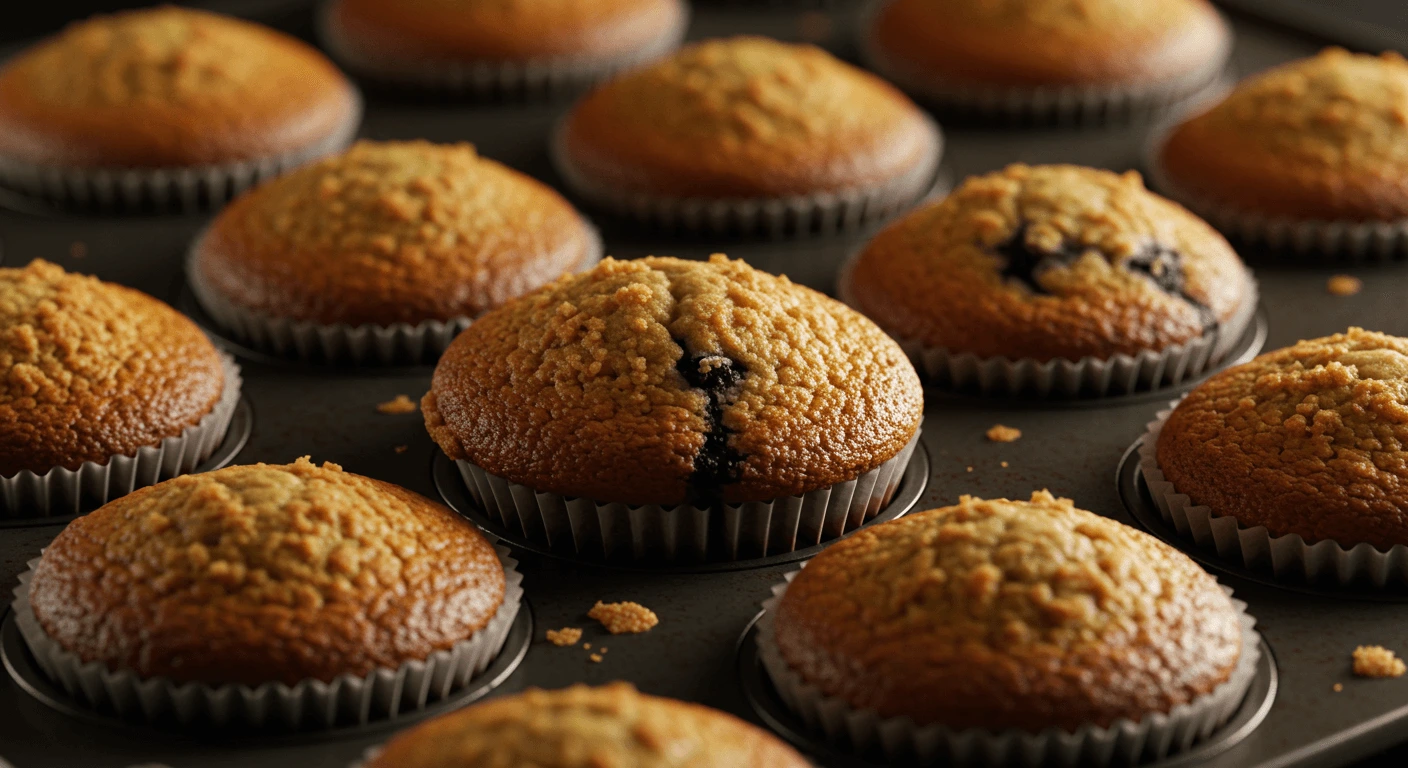Baking Moist Muffins can often feel like an art form that requires a delicate balance of ingredients and techniques. Whether indulging in a classic blueberry muffin, or experimenting with unique flavors, achieving that perfect moist texture will elevate your baking game. This guide will take you through the essential aspects of creating deliciously moist muffins from scratch.
The Art of Baking Moist Muffins: A Comprehensive Guide
Baking moist muffins is not just about throwing ingredients into a bowl; it’s a careful process involving understanding textures, moisture retention, and the science behind each component. This comprehensive guide aims to equip both novice and seasoned bakers with the knowledge required to create muffins that are irresistibly moist and flavorful.
Understanding Muffin Texture and Moisture

Understanding the intricacies of muffin texture is paramount when it comes to creating moist muffins. The term “moist” not only refers to the presence of liquid but also encompasses the overall feel and mouthfeel of the muffin. Various elements contribute to this balance, making it crucial for bakers to grasp the factors involved in ensuring their muffins achieve that sought-after moistness.
What Makes a Muffin Moist?
The science behind muffin moisture mainly revolves around the interaction of its key ingredients.
Key Ingredients that Contribute to Moisture: Fats, such as butter or oil, play critical roles in adding richness and moisture to muffins. They coat flour particles, reducing gluten formation and allowing muffins to maintain a tender crumb. Additionally, liquids—including milk, yogurt, or sour cream—add hydration to the batter, leading to a moist final product. These ingredients work in harmony, and finding the right balance is essential for success.
Another vital component is the leavening agents. Baking powder and baking soda create gas bubbles in the batter, helping muffins rise while retaining moisture by forming a structure that holds onto the liquid. Therefore, ensuring proper leavening will significantly affect both the texture and moisture level of your muffins.
The Role of Mixing Techniques
Mixing techniques play a crucial role in how moisture is retained in muffins.
Explanation of Mixing Methods: The two primary methods used in muffin baking are the muffin method and the creaming method. The muffin method involves combining dry ingredients in one bowl and wet ingredients in another before merging them. This technique minimizes gluten development, which helps retain moisture. On the other hand, the creaming method, where fat and sugar are beaten together, allows for more air incorporation but may lead to drier results if over-mixed or if too much flour is incorporated.
It’s important to remember that over-mixing can lead to tough muffins instead of light and airy ones. To ensure optimal moisture retention, mix until the dry ingredients are just moistened. A few lumps are okay; they will bake out during the cooking process.
Common Ingredients That Enhance Moistness

Using the right combination of ingredients can drastically improve muffin moisture.
Overview of Various Ingredients: Yogurt, sour cream, and applesauce are fantastic moisture-enhancing additions. Yogurt and sour cream introduce acidity, which helps break down gluten, leading to a softer texture. Applesauce adds natural sweetness and moisture without additional fats, making it a popular substitute in healthier recipes.
Flour choice also impacts the moisture level. All-purpose flour absorbs more liquid than cake flour, so adjusting ingredient ratios based on the type of flour used is essential. For example, using cake flour will yield a lighter, more delicate muffin with a moist crumb.
Essential Tips for Baking Perfectly Moist Muffins
Having a solid foundation in different types of ingredients and mixing techniques is important, but there are additional tips and tricks that can significantly impact muffin moistness.
Choosing the Right Ingredients
One of the most crucial aspects of baking moist muffins is choosing high-quality, fresh ingredients.
Importance of Fresh Ingredients: Using fresh eggs, ripened fruits, and recently milled flour ensures maximum flavor and moisture. When ingredients sit for long periods, they can lose potency and moisture content, negatively impacting your muffins. Whenever possible, shop for organic and locally sourced ingredients to achieve the best results.
Selecting the Best Flour and Leavening Agents: When it comes to flour, opting for unbleached all-purpose or cake flour permits expanded versatility. Cake flour, with its lower protein content, creates a softer texture—ideal for muffins. As for leavening agents, be sure they are within their shelf life. Expired baking powder or soda can lead to lackluster rises and dryness.
Ideal Baking Conditions
The environment in which you bake can also greatly affect muffin quality.
Optimal Oven Temperatures and Baking Times: Preheating your oven is non-negotiable; it facilitates even baking. Generally, muffins should be baked at a temperature of around 350°F (175°C). However, adjusting baking times according to the size of your muffins is vital. Oversized muffins may need longer to cook, leading to dryness if left unattended.
How to Prevent Drying Out During Baking: To keep muffins from drying out, place a pan of water at the bottom of the oven while baking to create steam. This additional humidity can help retain moisture in your muffins, ensuring they emerge fluffy and soft rather than dry and crumbly.
Storing and Keeping Muffins Moist
Post-baking care is just as important as the actual baking process.
Best Practices for Storing Muffins Post-Baking: To keep leftover muffins moist, store them in an airtight container at room temperature. If you’re concerned about them going stale, consider wrapping them individually in plastic wrap, which will preserve freshness and moisture.
Freezing Methods to Maintain Moisture Without Sacrificing Quality: For long-term storage, freezing is an excellent option. Once cooled, muffins can be wrapped tightly in plastic wrap and placed in freezer bags. When ready to enjoy, simply thaw them at room temperature or warm in the microwave for a few seconds for optimal softness.
Delicious Moist Muffin Recipes
Now that you’ve mastered the fundamentals of baking moist muffins, it’s time to put your skills to the test with some delicious recipes.

Classic Blueberry Muffins
Blueberry muffins are a timeless favorite known for their delightful taste and moist texture.
Ingredients and Step-by-Step Instructions: Start with fresh blueberries, unbleached all-purpose flour, sugar, eggs, milk, melted butter, baking powder, and a hint of salt. Begin by preheating your oven to 375°F (190°C). In a bowl, combine the dry ingredients before whisking together the wet ingredients separately. Gently fold the wet mixture into the dry until just combined—be careful not to overmix. Finally, fold in the blueberries and spoon the batter into lined muffin tins. Bake for approximately 20-25 minutes or until a toothpick inserted comes out clean.
Tips for Achieving Maximum Moisture: To enhance moisture, incorporate sour cream or yogurt into the batter. Additionally, sprinkle coarse sugar on top before baking for a delightful crunch and flavor contrast.
Chocolate Chip Banana Muffins
Chocolate chip banana muffins are the perfect treat for those looking for a rich, moist indulgence.
Recipe Breakdown with Emphasis on Moisture-Rich Components: Use ripe bananas for their natural sweetness and moisture. Combine them with flour, brown sugar, chocolate chips, baking soda, eggs, and vanilla extract. Preheat the oven to 350°F (175°C) and mash the bananas in a bowl. Mix in the remaining wet ingredients, then stir in the dry ingredients and chocolate chips. Spoon the batter into muffin tins and bake for 18-20 minutes until golden brown.
Suggestions for Variations: You can add nuts, such as walnuts or pecans, for an added layer of flavor and texture. Alternatively, swap some of the flour for oats to give the muffins a wholesome twist while maintaining their moistness.
Lemon Poppy Seed Muffins
Lemon poppy seed muffins are bright and zesty, perfect for a refreshing breakfast treat.
Detailed Recipe Focusing on Zest for Flavor and Moisture: Gather your ingredients: all-purpose flour, granulated sugar, poppy seeds, baking powder, lemon zest, lemon juice, eggs, and milk. Preheat your oven to 375°F (190°C). Whisk the dry ingredients together in one bowl and the wet ingredients in another, making sure to include ample lemon zest for fragrance. Combine gently, being careful not to overmix. Bake for 20-25 minutes until a toothpick comes out clean.
Alternative Flavor Combinations: Experiment with different citrus fruits like orange or lime for a unique twist. You can also pair the lemon with blueberries for a delightful contrast of flavors.
Troubleshooting Common Muffin Issues
Even experienced bakers can encounter obstacles when trying to create the perfect muffin. Knowing how to troubleshoot common issues will save time and frustration.
Diagnosing Dry Muffins
Dry muffins can occur for various reasons, and identifying the culprit is key to improvement.
Analyzing Causes of Dryness: Common causes include overmixing the batter, incorrect ingredient measurements, or baking for too long. Ensure you’re measuring accurately and handling the batter gently to avoid tough muffins.
Solutions to Avoid Common Pitfalls in Future Bakes: Incorporate moisture-rich ingredients like yogurt or applesauce into your recipes. Also, consider slightly underbaking muffins and allowing residual heat to finish them off. They will continue to set and should maintain moisture.
Adjusting Recipes for Dietary Needs
Baking shouldn’t be limited by dietary restrictions, and adapting recipes can maintain moistness while accommodating these needs.
Modifying Recipes for Gluten-Free or Dairy-Free Options While Keeping Moisture Intact: For gluten-free alternatives, try using gluten-free flour blends, which often include starches that help mimic the texture of wheat flour. To replace dairy, use plant-based milk or yogurt that won’t compromise the recipe’s integrity.
Alternative Ingredient Substitutions: Applesauce can replace eggs in vegan recipes while maintaining moisture. Be mindful of the proportions since these substitutes can vary in density and moisture content.
Conclusion
In conclusion, mastering the art of baking Moist Muffins requires a blend of science, creativity, and attention to detail. From understanding the components that contribute to moisture to selecting the perfect ingredients and techniques, every step plays a crucial role in achieving delectable results. With the insights provided in this comprehensive guide, you’re now well-equipped to explore new muffin recipes and perfect your baking skills. Enjoy the journey of experimentation and delight in creating moist, flavorful muffins that will impress family and friends alike!
For more recipes please click on below links:
Dive into Branzino Meat: Explore its Flavor and Culinary Versatility
Easy Eggless Sausage Hashbrown Breakfast Casserole Recipe – Make Mornings Delicious and Hassle-Free

